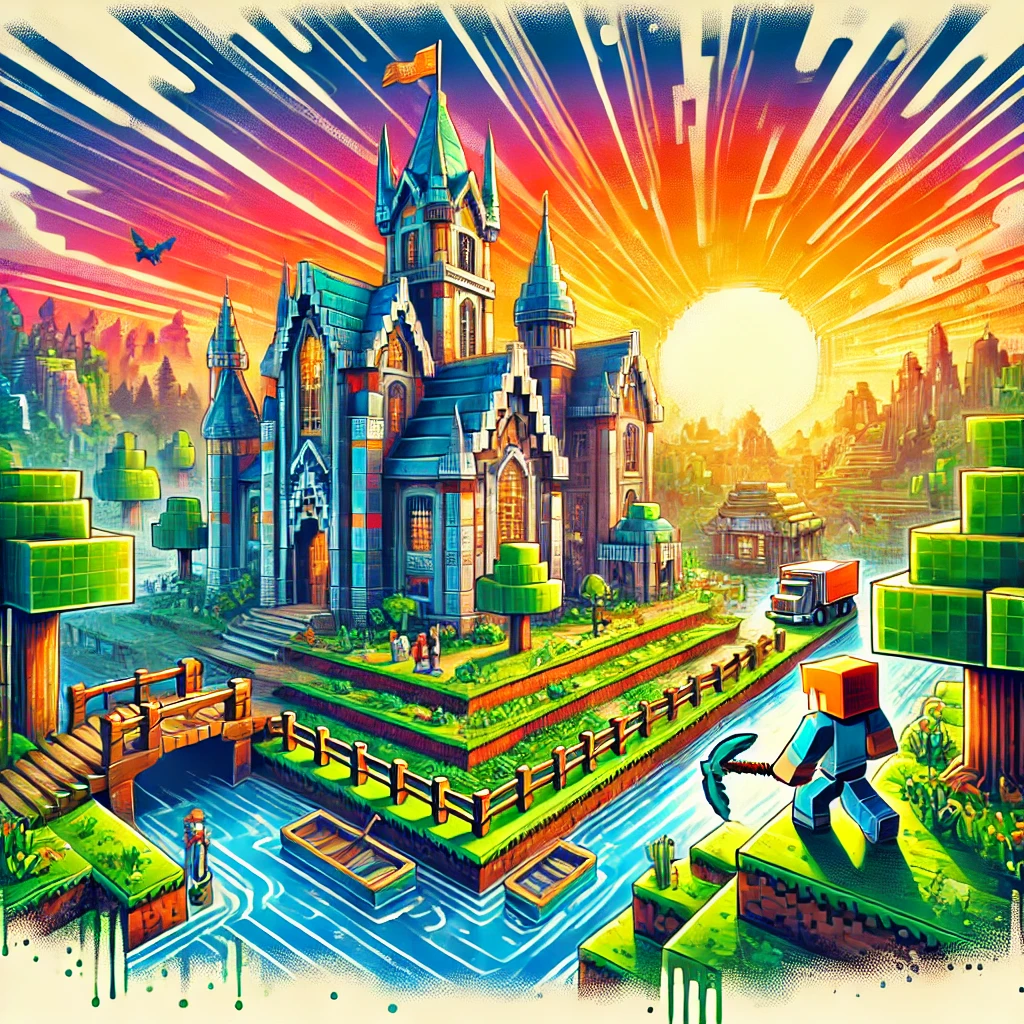
Few games have captured the hearts and imaginations of players across the globe like "Minecraft." Since its release in 2011, this sandbox game has grown into a cultural phenomenon, influencing not just gaming but education, design, and even environmental activism. This blog delves into the world of "Minecraft," exploring its unique gameplay, community impact, and why it remains relevant over a decade later.
What is "Minecraft"?
At its core, "Minecraft" is a sandbox game that allows players to build, explore, and survive in a blocky, procedurally generated 3D world. Developed by Markus Persson and later acquired by Microsoft in 2014, the game offers various modes including Survival, Creative, and Adventure, catering to a wide range of playstyles.
Key Features of "Minecraft"
"Minecraft" grants players the freedom to construct anything they can imagine, from simple houses to intricate castles, working computers, and even replicas of real-world landmarks. The game’s Creative mode provides unlimited resources for unbridled creativity. In Survival mode, players must gather resources, craft tools, and fend off creatures like zombies, skeletons, and the infamous Creeper. The thrill of surviving in a hostile environment adds depth to the gameplay. With a virtually infinite world, "Minecraft" encourages exploration. From deep caves to towering mountains, and from lush forests to barren deserts, the game’s biomes are diverse and immersive. The Nether and End dimensions add a sense of mystery and danger. Redstone, "Minecraft’s" in-game equivalent of electrical circuits, allows players to create complex mechanisms. From automated farms to intricate contraptions, Redstone engineering showcases the game’s potential for problem-solving and innovation. "Minecraft" thrives on its multiplayer experience, where players collaborate on massive projects or compete in mini-games. The global community’s creativity is showcased through mods, custom maps, and texture packs.
"Minecraft’s" Impact on the World
"Minecraft: Education Edition" has been embraced by schools to teach subjects like math, history, and coding. Its engaging format helps students grasp complex concepts through interactive learning. The game has brought people together, fostering friendships and collaboration across the globe. During the COVID-19 pandemic, "Minecraft" served as a virtual meeting ground for events, graduations, and even weddings. Projects like "Minecraft: Build the Earth" encourage players to recreate our planet in-game, fostering appreciation for geography and environmental conservation.
Why "Minecraft" Remains Timeless
Mojang Studios, the game’s developer, consistently releases updates, introducing new features, biomes, and mobs that keep the game fresh. "Minecraft" is available on almost every platform, ensuring a broad reach. Its pixelated art style and simple mechanics evoke nostalgia, while the vibrant community sustains its relevance.
The Future of "Minecraft"
As "Minecraft" evolves, its potential seems limitless. The integration of AI for better NPC behavior, enhanced graphics with ray tracing, and collaborations like "Minecraft Dungeons" and "Minecraft Legends" point to a bright future. The game’s emphasis on creativity, community, and education ensures it will remain a staple in gaming culture.
Conclusion
"Minecraft" is more than just a game; it’s a platform for creativity, a tool for education, and a medium for connection. Its impact transcends generations, making it a timeless masterpiece in the gaming world. Whether you’re a seasoned builder or a curious newcomer, "Minecraft" offers a universe of endless possibilities.